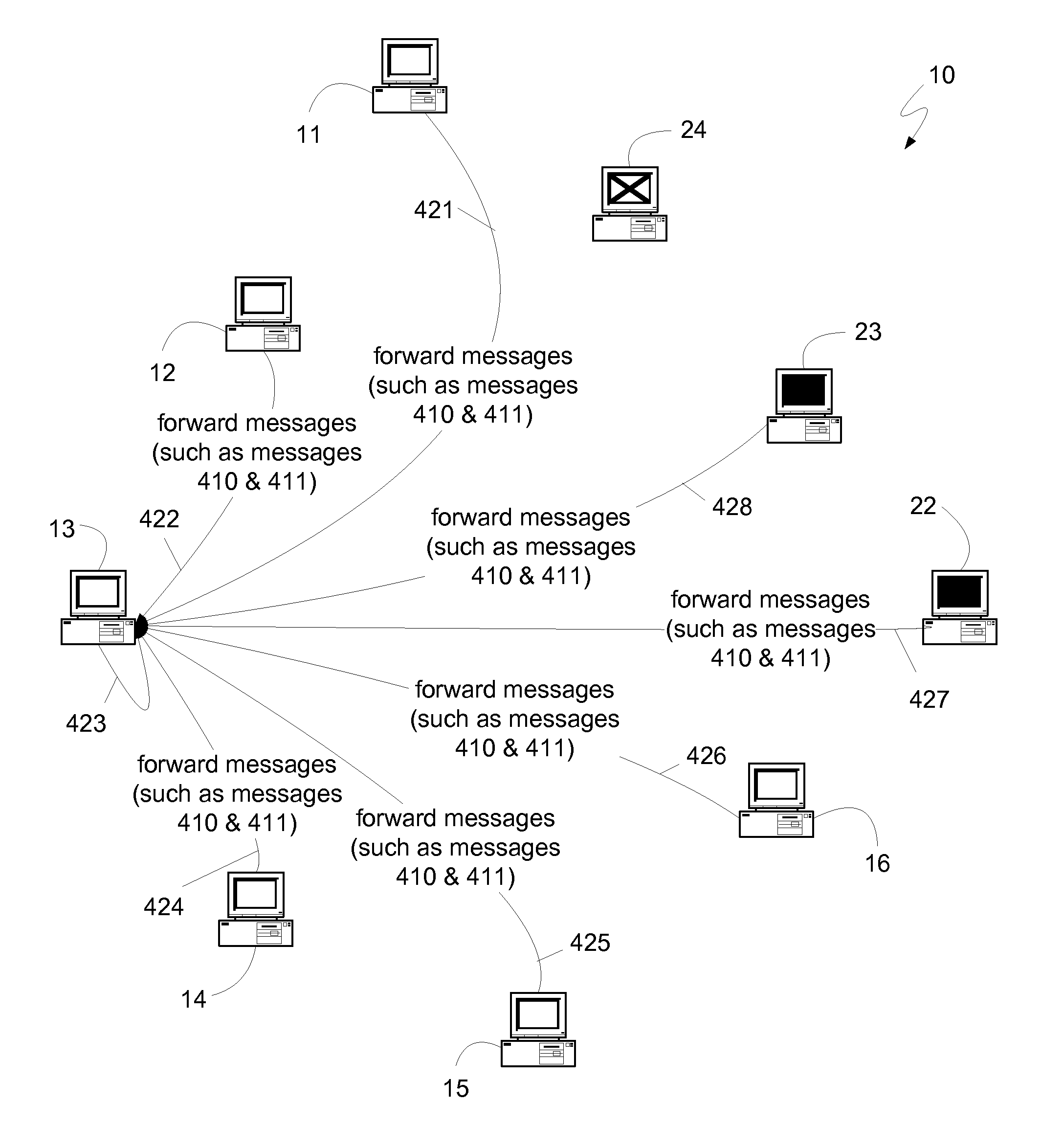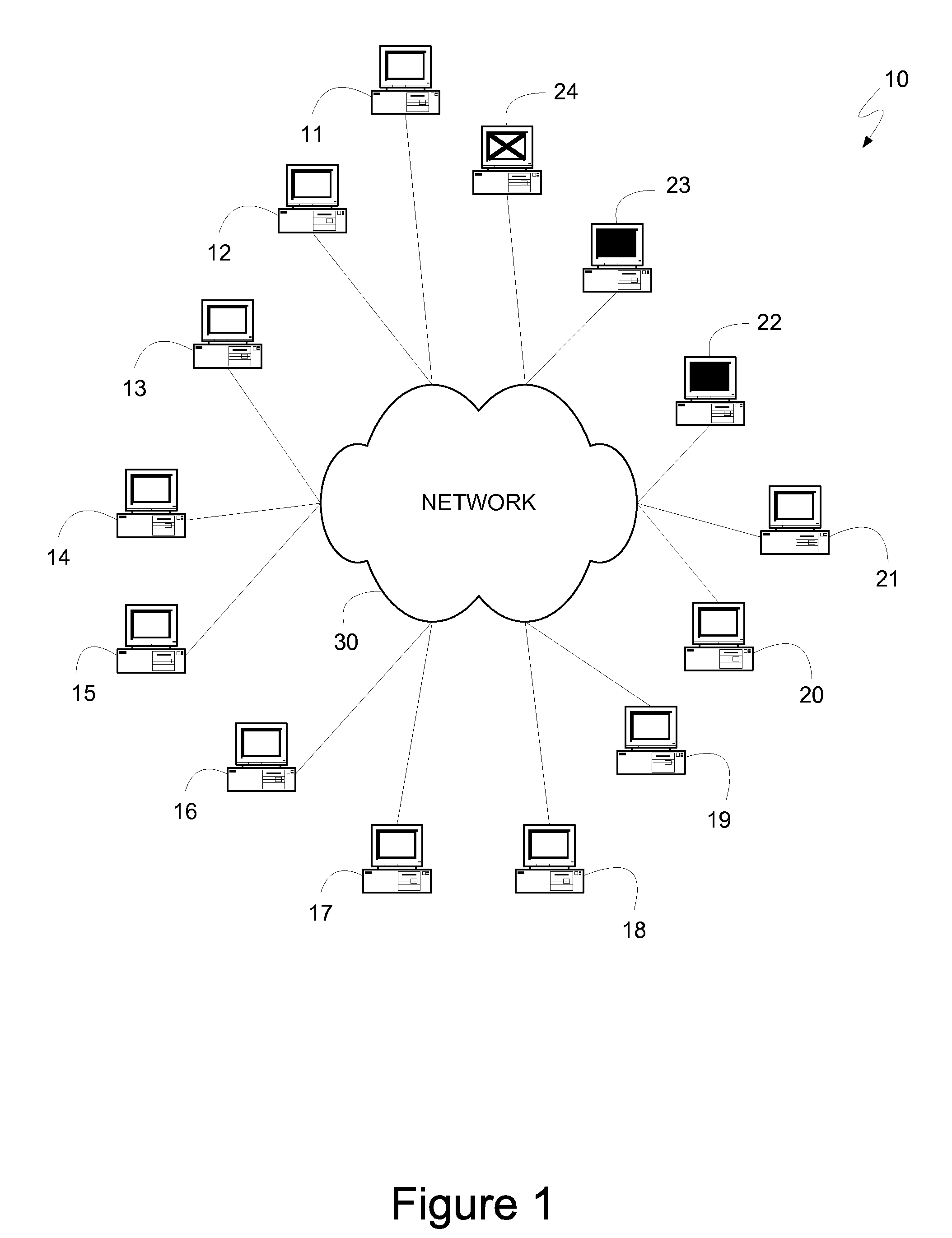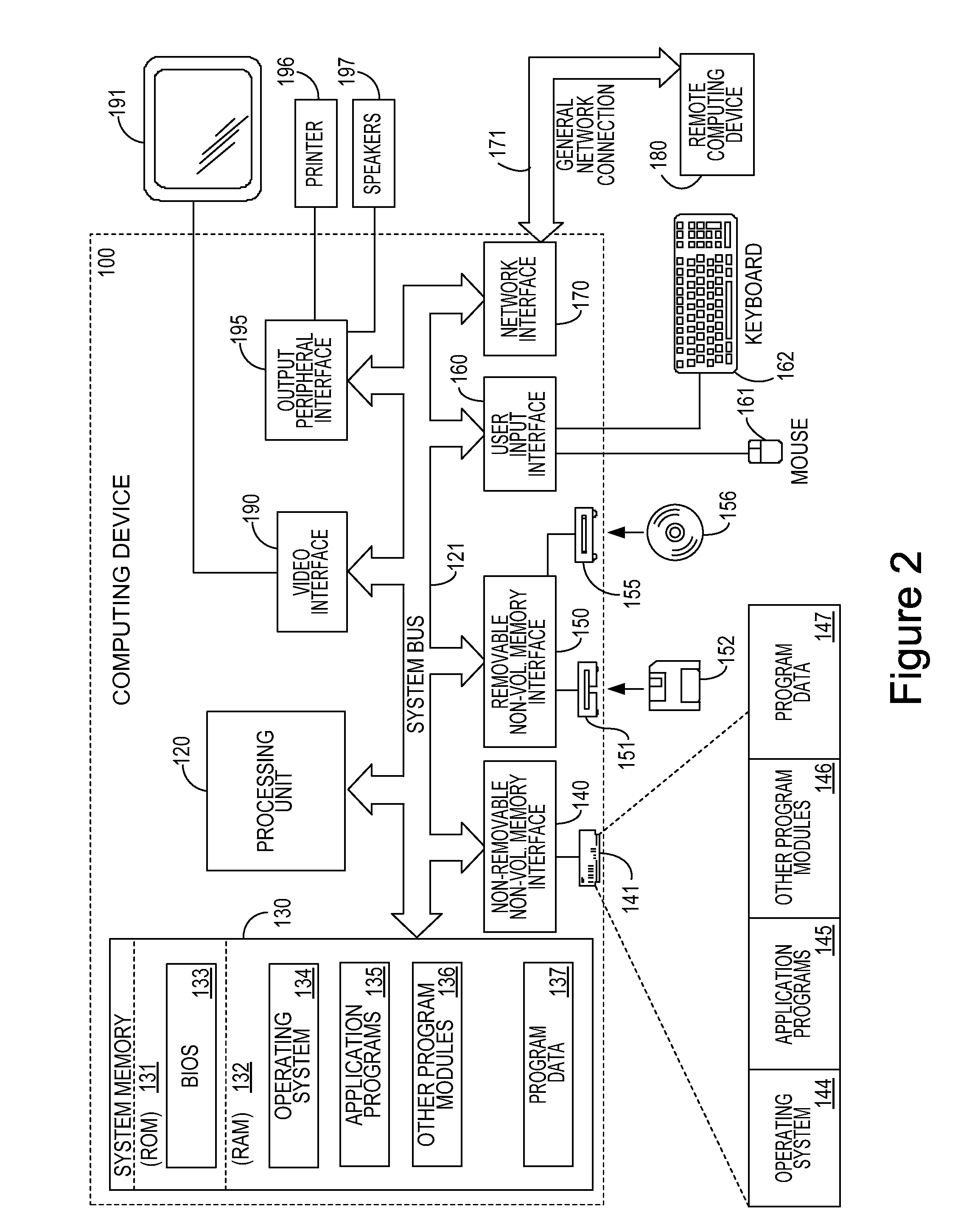Fast Byzantine Paxos
a byzantine and fast technology, applied in the field of distributed computing, can solve problems such as computation efficiency when both transmitting
- Summary
- Abstract
- Description
- Claims
- Application Information
AI Technical Summary
Benefits of technology
Problems solved by technology
Method used
Image
Examples
Embodiment Construction
[0039]A distributed computing system can comprise a number of individual personal computing devices, server computing devices, or other devices that have sufficient processor and storage abilities to participate in the system. The distributed computing system can aggregate the abilities of its constituent computing devices to either provide for greatly increased processing capabilities and storage space, or to implement redundancy, allowing multiple devices to provide access to the same information. Thus, one common usage for a distributed computing system is the aggregation of the unused processing capabilities and storage space of many different personal computing devices attached to a common network. Such a distributed computing system can maintain information regarding the system, such as which devices are currently part of the system and on which device a given set of information is stored. This information can be necessary for the devices to aggregate their capabilities and st...
PUM
 Login to View More
Login to View More Abstract
Description
Claims
Application Information
 Login to View More
Login to View More - R&D
- Intellectual Property
- Life Sciences
- Materials
- Tech Scout
- Unparalleled Data Quality
- Higher Quality Content
- 60% Fewer Hallucinations
Browse by: Latest US Patents, China's latest patents, Technical Efficacy Thesaurus, Application Domain, Technology Topic, Popular Technical Reports.
© 2025 PatSnap. All rights reserved.Legal|Privacy policy|Modern Slavery Act Transparency Statement|Sitemap|About US| Contact US: help@patsnap.com



